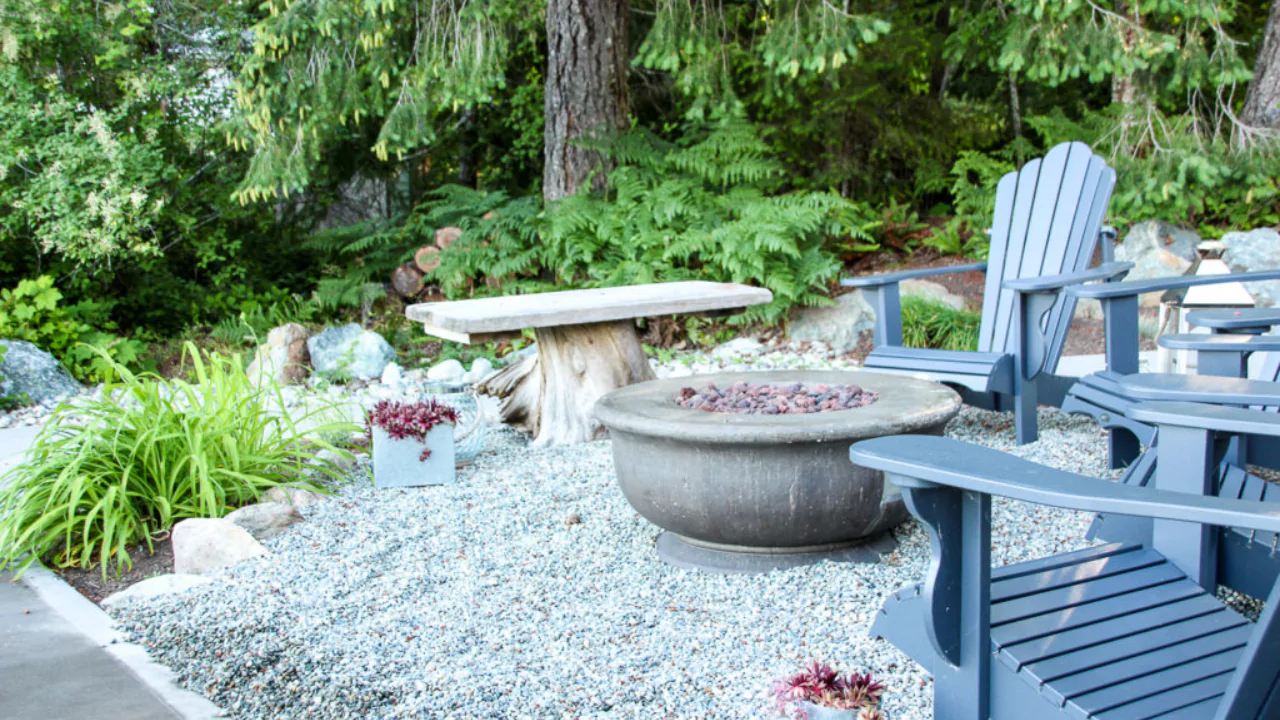
Forget about the small slab of concrete extending from a mid-20th century home. Homeowners today are expanding their houses outdoors with large piers, elaborate gardens, and extensive paved areas. For patios, gravel is a perfect choice. It is more aesthetically pleasing than stone or slate patios, which cost over double its price. Bulk gravel can be obtained from construction supply companies and home improvement stores. Choose a type of gravel for your patio depending on your foot traffic levels, gardening habits and maintenance, and of course, your budget.
Building a Gravel Patio
Before putting gravel, it is crucial to prepare the base. Gravel is a flexible, economical option for outdoor seating and garden areas. These patios usually have an outer wall made from concrete, stone, brick, or both. The most durable walls consist of concrete bases with top decorations made of stone or slate.
After finishing the enclosure, proceed with excavating the patio area and removing the topsoil until only hardpan soil remains. This type of soil is denser and provides a better foundation for a gravel patio compared to soft and spongy topsoil. Also, remember that gravel should rest at a minimum of 4 inches below the enclosure’s bottom edge. Use square shovels and a level, at least for initial shaping, to create an even surface and install drainage pipes if needed.
Installing a gravel base comes next in constructing your gravel patio. Add a layer of road rock to fill the marked area up to three fourths. Sometimes referred to as road base, road rock contains more significant angular gravel pieces. Besides being cheaper than other gravels, the angular pieces strengthen the bond and create a robust foundation for the patio. Landscaping firms always have stock of these; other suppliers are as close as your local contractor. Also remember to compact the gravel using a plate compactor, which is a small machine available for rent at rental supply stores.
Types of Decorative Gravel for Patios
At last, you can utilize decorative gravel for your patio. When selecting the gravel, tan, gold, and rust are some of the colors available. Darker shades will retain more heat, while lighter shades can give a stark appearance. If you want a more natural appearance, light brown and gray gravels are ideal. For a unique appearance, feel free to blend different gravels.
Shape preferences also matter. Walking on round gravel, or pea gravel, is the easiest and most comfortable. Such gravel does tend to shift as you walk on it. After some use, you will notice footprints on your patio that require some gravel maintenance. You will need to redistribute, augment, and replenish gravel until it reaches the desired amount.
Gravels that are angular like road base tend to be far less comfortable to walk on. However, the angular form allows the rocks to stay compacted for a longer period. For households with children and pets, these types of gravels tend to be the better option. Decomposed granite is often a favored option in this category. Others include lava rock and quartzite.
Another option is decomposed gravel or gravel that has been broken into very small pieces. Its coarseness lies between sand and gravel. It is highly economical, comes in many shades, and forms a soft paving surface. While it can become mushy in areas with heavy snow or rain, it offers durability in milder climates, especially when mixed with liquid stabilizers prior to installation.
Building with Stones, Pavers or Bricks
Maybe you envision a patio alongside the gravel that is constructed of stone, pavers, or bricks instead. While these patios may appear complex, they are actually easier to build than wooden decks. A project of this nature can be completed in a weekend or two.
Similar to a granite patio, a stone or brick patio is beautiful and durable if constructed on a solid and level base. For them to be constructed, you will need to excavate 4 to 8 inches of soil, which is the thickness of the building compacted using a plate compactor, and the soil. Then comes the adding of a 4 inch base of crushed granite or stone which is fairly inexpensive. Spreading 2 inches of crushed stone over the area and compacting it will layer it, as well as provide an additional 2 inch layer of stone that also needs to be compacted.
Though not as durable, the speed Dry-lay is executed relative to its flexibility when it comes to repair makes it a go to for many people. It allows for faster water drainage than traditional methods, making it more efficient. Unlike these methods, the stones and bricks used can be removed, should repairs be needed.
For additional information about gravel, brick, and stone patios, please visit the following links:
50+ Landscaping Ideas with Stone from Sunset Magazine
Outdoor Patio Ideas from Julie Orr Design
Lay an Appealing Brick Patio from This Old House
Christensen’s agricultural roots began with her grandfather’s farm and her mother’s vegetable garden in southern Idaho. Now, she resides and cultivates her garden on the high plains of Colorado. When Julie is not getting her hands dirty in the soil, she writes about food, education, parenting, and gardening.